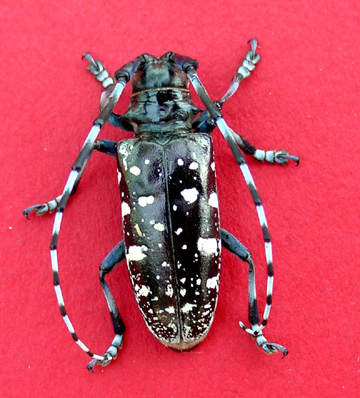“Like the arrow
in Greek mythology that ultimately killed Achilles, these exotic invasive
insects kill trees by attacking their most vulnerable parts.”
Invasive
insects have become one of the most threatening forces behind rapid ecological
change in not only Vermont but the whole northeast United States as a whole as
well. Many of them have been introduced to the northeast U.S due to human
actions such as importing and trading of foreign products without proper precautions.
Nothing can express the severity of the situation as well as solutions better
than the article. Invasive Insects: Achilles heel of the northern forest
by Allaire Diamond.
The article focuses on three
invasive species that are beginning to move into Vermont borders attacking many
native trees such as the abundant hemlock and ash. The three insects include
the hemlock wooly adelgid, the emerald ash borer and the Asian longhorned
beetle. Among them, the hemlock wooly agdelgid is the most dangerous for the
region due not only to the abundance of hemlock in the area but also due to the
fact that it’s full impacts are still unknown. The insect has been known to
turn lush, dense forests of hemlock into empty plains as has been seen in many
southern Appalachian forest plots. The emerald ash borer and Asian longhorn
beetles tap into the cambium layer of the bark of its victims and feed on the
wood. This causes the flow of nutrients and water through vascular tissue to
become disconnected resulting in death of the tree. The emerald ash borer has
been noted as the reason behind the extinction of the ash tree in the southern
Michigan area. Out of the three insects, the hemlock wooly adelgid is the only
one currently present in Vermont but the other two have been spotted as close
as 30 miles from Vermont borders.

(Hemlock Wooly Agelid)

(Hemlock Wooly Agelid)
If any of these insects were to
establish significant populations within Vermont forests, it could mean very
big problems for the state of Vermont. Hemlock hardwoods are a majority species
in Vermont taking the 7th most common spot in the state. They are
essential to the ecological stability of many Vermont streams and rivers
because they play a crucial role in the shading of the rivers which in turn
cools them allowing diverse fish and bacteria to thrive. If prominent in
Vermont, the hemlock wooly agelid would not only destroy the entire population
of the hemlock but would critically alter many other ecological systems. On the
other hand, with the entrance of the emerald ash borer, Vermont could also begin
to see some damaging economic blows. The harvesting of ash trees for the timber
industry is one of Vermont’s largest incomes. With the rapid depletion of the
ash, Vermont’s economy could begin to slip leaving hundreds, possibly even
thousands of people out of work.

(Emerald Ash Borer)

(Emerald Ash Borer)
The effects of any of these invasive
insects can be devastating to local ecosystems but the chances of them entering
and staying can be slowed down and even prevented completely. The most
effective way to slow down the movement of these insects is by education of the
general public. Diamond explains that most insects are spread by human purchases
of firewood and nursery stock and that by buying wood locally and educating the
buyers about what to look for in the wood the spread can be greatly reduced. It
is suggested that one buys firewood no more than 50 miles from the home. Also
by education of distinct characteristics of the three species they will be more
easily recognized and hotlines are available for contact to help with the
cause.

(Asian Longhorn Beetle)

(Asian Longhorn Beetle)
I think that simply by reading
Allaire Diamond’s article on invasive species has educated me more than I was
previously. The hemlock wooly adelgid, emerald ash borer and Asian longhorned
beetle are three species that can rapidly change Vermont’s beautiful, forested
landscape. Without the proper education and motivation by the public to stop
these pests, we could see extreme changes to the natural ecosystems of the
state. Some government agencies have begun setting 2,200 traps in hopes of
trapping some of the predators but this will only help to an extent. The exile
of these insects can only be stopped as a group effort.
By: Matt Hollingsworth
Allaire, Diamond. "Invasive Insects: Achilles Heels of the Northern Forest." Vermont Land Trust. Web. 29 Mar. 2012. <http://www.vlt.org/news-publications/invasive-insects>







